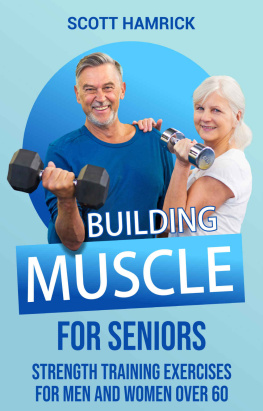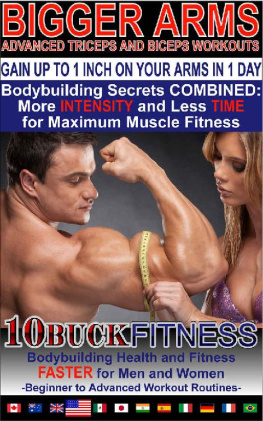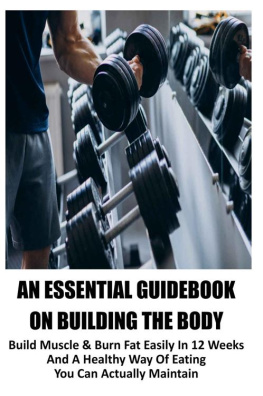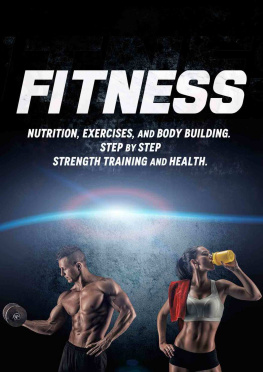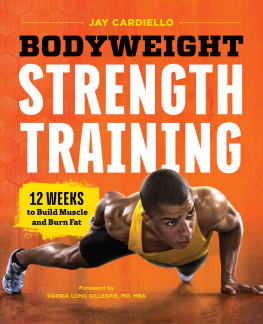15 Essential Exercises for Bigger Triceps
Quickly build big triceps with targeted weightlifting programs
Published by www.fundamental-lifestyle.com
Copyright 2018 Jason Curtis
The moral right of this author has been asserted.
All rights reserved. No part of this publication may be reproduced, stored in a retrieval system, or transmitted in any form or by any means, without the prior permission in writing from the publisher.
The publisher is not responsible for websites (or their content) that are not owned by the publisher.
Cover Image Copyright: Shutterstock: All best fitness is here
For more information about the author:
Website: www.5sfitness.co.uk
Facebook: www.facebook.com/5sfitnessuk
Instagram: www.instagram.com/5s_fitness
Twitter: www.twitter.com/5sfitness
YouTube: http://bit.ly/2GksRK1
Table of Contents
Introduction
When it comes to arm development, the biceps usually get most of the attention. The triceps, however, make up 2/3rds of the upper arm and play a huge role in any kind of pushing movement. Not only are the triceps important for developing a strong bench press, they play a huge role in any action that involves moving your hands forward or overhead. The triceps are an extremely important muscle group to train as they play a huge role in your overall strength and power.
This book will show you the most effective ways to train your triceps by teaching you the 15 most important exercises to quickly build strength, power and size in your triceps.
Each exercise is explained using clear diagrams with point-by-point technical descriptions. The exercises are also demonstrated in live videos that you can access on the next page.
Ive included a comprehensive glossary of equipment and terms you should know. Refer to the section How to Program for help and advice on designing your own, tailor-made program.
This book is designed to be used in a gym to help you build an overall workout, but there are plenty of effective exercises you can do at home with minimal equipment.
If you have any doubts about an exercise, always consult a trained professional and stop if you feel any pain. If you plan to work with heavy weights, use someone to spot (help) your lifts for your own safety.
For more information about the author:
Website: www.5sfitness.co.uk
Facebook: www.facebook.com/5sfitnessuk
Instagram: www.instagram.com/5s_fitness
Twitter: www.twitter.com/5sfitness
YouTube: http://bit.ly/2GksRK1
Anatomy of the Triceps
The triceps, or triceps brachii, is a three-headed muscle (hence Tri) on the back of your upper arm.

The central, bulging portion is known as the belly , while the points of origin are known as the heads.
The long head of the triceps originates on your scapula (shoulder blades) and the medial (situated in the middle) and lateral (situated at the side) heads originate on your humerus (upper arm bone). As the long head of the triceps attaches onto the shoulder blade it plays a small role in shoulder extension (pulling your arm down and back from above).
The triceps cross the elbow joint and insert on the olecranon process of the ulna (top of forearm bone) so they also work to extend your elbow.
The triceps insertion point below the elbow can be a common site of tendinopathy a term used to describe various tendon ailments, including tendonitis (acute tendon injury accompanied by inflammation). Therefore, care must be taken not to overstress or tear this tendon.
Equipment
While resistance/cable machines can be used to effectively train your triceps, this book deals with free weight equipment specifically, the barbell, the EZ/triceps bar, weight plates and dumbbells.
It is much more effective to combine compound exercises (exercises that use many muscle groups) and single joint exercises (exercises that use one muscle group) in your workout. Combining these two types of exercise will greatly improve your strength and hypertrophy (muscle building). I recommend completing the compound exercises first, as they are the most tiring, before moving on to the single joint exercises to finish. Combining these exercises in your workout will get the results you are after.
Resistance bands are a great bit of kit that can be used to get your triceps warmed up, create a huge pump, and keep your elbows in good health.

Get the Videos
The videos to accompany each exercise are available to download for free from
https://fundamental-changes.teachable.com/p/15-essential-exercises-for-bigger-triceps/
or here
http://geni.us/triceps
Simply enrol in the course and youll have free access to all 15 videos.
If you type above link into a browser, please note that there is no www.
Warming Up
The RAMP protocol is an ideal warmup before any resistance training:
R aise your heart rate and body temperature. This could be achieved with simple high-knees or bodyweight squats. Ideally, however, the movements should be specific to the exercises you are going to be performing.
A ctivate the key muscle groups you will be using during the session.
M obilise your joints. Dont spend hours mobilising your whole body. Instead, concentrate on areas that might limit your ability to perform a movement effectively. For example, mobilise the areas that would limit your ability to achieve a deep squat. Or, stretch your hip flexors prior to deadlifting to facilitate a stronger hip extension.
P otentiate i.e. prime your body for maximal intensity. For example, progressively loading weight.
However, warming up with light sets of the primary movement and progressively loading up is often sufficient.
Calculating Your One Repetition Maximum
The easiest way to measure your program is to test your one repetition maximum (1RM) on the primary lift s . Quite simply, this is the maximum amount you can currently lift for one repetition.
Testing your 1RM can be stressful and comes with a certain risk of injury, especially if you are not an experienced lifter. Its common, therefore, to calculate percentages of your 1RM . Coaches will work off an athletes 2, 3 and 5RM all of which are much less stressful to test.
To estimate your 1RM from your 2, 3 or 5RM, you can use a coefficient (i.e. a formula. You can download 1RM apps to your phone to do the calculations for you).
A coefficient is a constant number that is multiplied by a variable (in this case, weight lifted). These coefficients have been worked out over various studies and are surprisingly accurate.
The coefficient for 5RM is 1.16. In other words, if your 5RM is 100kg, multiply that weight by 1.16 to find your 1RM. In this case, the 1RM would be 116kg.
Different coefficients and formulas give negligibly different results, but they all work well as estimations from which to program.
As a working model, if you know your 1RM, you can calculate your 2, 3 and 5RMs using the following percentages:
- 2RM = 95% of 1R M
- 3RM = 90-92% of 1RM
- 5RM = 85-87% of 1RM
Another method to measure your programming is the rating of perceived exertion (RPE) scale. This is a scale which rates your perceived level of physical effort. The simplest version is a 1-10 rating, with 1 being almost no exertion, 5 being moderate exertion, and 10 being the hardest it could possibly be for the number of reps programmed.








